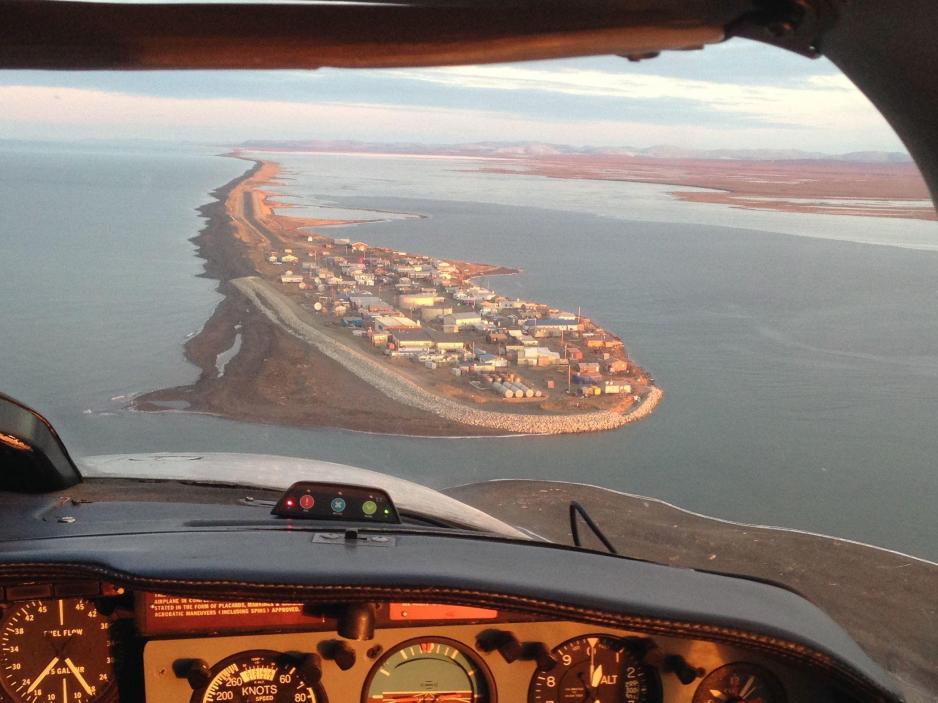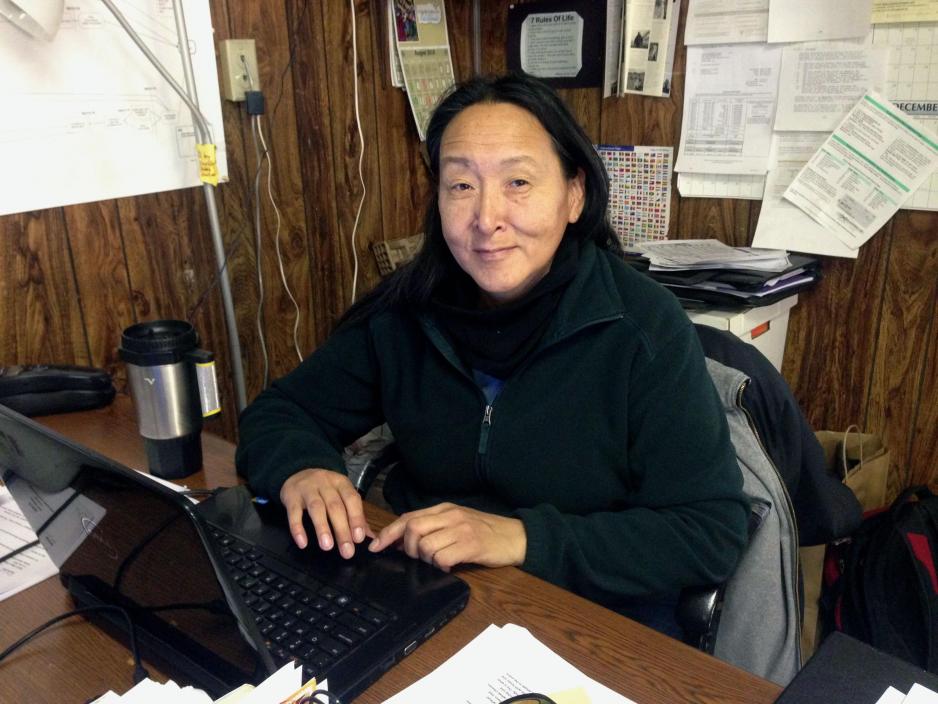Kivalina: Waiting for disaster

The 400 citizens of Kivalina island in Alaska fear that they will be the first climate change refugees in the Arctic. In ten years, their entire island may be gone.
Klikk her for norsk versjon.
The Iñupiat inuits living in Kivalina island have known for a long time that climate changes eventually would make it impossible to stay in their barrier island community on Alaska’s west coast. As early as 1992, there was agreement that the town would need to move – but that was where the agreement ended. Where to move, when to move, and not least who would pay for it – those are issues still unresolved today. The people of Kivalina despair, as help may not arrive until it is too late.
- We saw the changes to the environment a long time ago, says Colleen Swan on the phone from Kivalina.
Swan is a former Council chair and relocation coordinator. She is born in Kivalina, and has been a strong voice both locally and internationally, warning about the disaster that is sure to come.
Rapid changes
- In the beginning we could adapt to the changes. But then it started getting worse year by year, and we were no longer able to adapt fast enough, she says.
Erosion eats away at the island’s edges, the ice disappears, and the annual storms leave ever increasing damage. On the mainland, new and growing sinkholes threaten the hunters and hikers. Sandbags and sea walls offers only temporary shelter.
- The ice is no longer there to protect us against the storms. Where there is ice, it is often too thin to hunt for seal and whale, our food supply for the winter. Now it is different from year to year, and we never know what to expect, she says.
For the Iñupiat, their entire way of life is in danger. The island is disappearing, as are the hunting grounds that provide their livelihood. The Kivalina residents fear that the damage will escalate much faster than the government can respond.
- We know what must be done. We have known for a long time. We do not need any more deliberations, we need action. But it may be too late already, says Swan.
Obama flew over
When president Obama visited Alaska last fall, Air Force One flew over Kivalina so the president could see the community that has become a symbol of what climate change in the north will bring. He could see a handful of houses, including the school and the post office, and an airstrip, surrounded by a coastline damaged by the waves. The sea wall built a few years ago by the U.S. Army Corps of Engineers can no longer keep the waves at bay. It has an expected life span of 15 years, a deadline that is fast approaching.
Et bilde publisert av The White House (@whitehouse)
- Kivalina is a wake-up call for all of us, president Obama said in a speech last fall nearby, in Kotzebue, Kivalina’s closest neighbor, 80 miles away.
Climate change is a priority for the Obama administration, and the budget request for 2016 includes 400 million dollars to alleviate the effects on the coastal communities in Alaska. It is unlikely that this number will survive the budget process in a Republican-run Congress, and even if it could, it is only a fraction of what is needed in the long run.
30 communities in need of assistance
Kivalina is one of more than 30 coastal communities in need of relocation assistance, and the expense would be enormous.
Moving Kivalina would cost upwards of 100 million dollars, some say four times that. In a country where Congress is under severe pressure from voters to curb spending, and Alaska is heading for record budget deficits, neither Washington nor Juneau is likely to offer the kind of assistance Kivalina will need.
Les også: Alaska's Uncontained Failure: Layoffs, Deficit, and an Uncertain Future
The people of Kivalina have worked hard over many years to solve their predicament, not only by reaching out to government. In 2008, they sued several large oil and gas companies operating in Alaska for environmental damage caused by the companies’ activity. Kivalina demanded 400 million dollars from the companies, to pay for the relocation. The lawsuit went all the way to the Supreme Court, where it was dismissed in 2013. The case was a major disappointment for the community. Colleen Swan still holds the companies responsible:
- They knew. They knew about the damage they caused to the environment in the 1980s, she says.
Christine Shearer, the author of ”Kivalina: A Climate Change Story”, a book about the community and its struggle, points to the particular predicament of the Kivalina people:
- A lot of our national policies have to do with after a disaster occurs. But we do not have policies in place to prevent a disaster, even when we know it is coming, says Shearer.
- They should have been listening
High North News asked Alaska senator Lisa Murkowski about her efforts to help Kivalina and other communities in a similar situation. Her office states that “senator Murkowski is deeply concerned about the well-being of the people of Kivalina and other Alaska villages that may need relocation. She has engaged with both local residents and agencies such as the Army Corps of Engineers to discuss these challenges and find solutions to them. She has introduced and advanced offshore revenue sharing legislation that would provide significant financial resources to Kivalina and other villages, including through the creation of a Tribal Resilience Fund that would make up to $200 million in adaptation grants available each year”.
Colleen Swan does not believe that Kivalina can rely on politicians and bureaucrats to solve their problems. But she makes it clear that the government bears a particular responsibility:
- They should have been listening to us a long time ago. We keep going back to square one. It is not good to have decisions made all the way away in Washington or Juneau. It was the federal government that forced us to settle in Kivalina all those years ago, because the children had to go to school. Our elders knew this was not a good place to settle, she says.
The federal government has proposed a new site for the community, but it has been difficult to reach agreement on the safest and most viable option. There are plans for new school to be built a few miles inland, in an area which could serve as an evacuation route should a storm force the population off the island. But there is no road to the area, and plans to build one have stalled because cost issues and federal regulations: Funds cannot be allocated to a road where no-one lives. But in the Kivalina case, no-one can move until a road can get them there.
Colleen Swan wants the local population to have the lead in how Kivalina handles the situation.
- Our people know what needs to be done. But laws and regulations make it difficult, and we don’t have the necessary power. Our entire way of life is affected by climate change. Everything is unpredictable now.
Only one thing can be said for sure:
- Life will never be the same for us.


